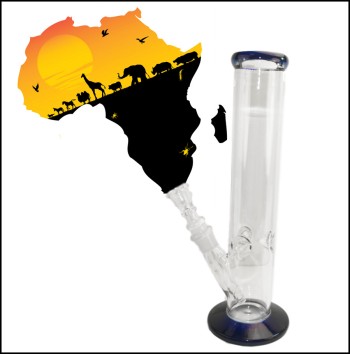
Researchers funded by the federal government have unveiled novel techniques for distinguishing between marijuana and hemp by precisely measuring the THC levels in both flowers and edibles.
The National Institute of Justice (NIJ), a branch of the Justice Department, is championing the findings from two research endeavors it sponsored, focusing on refining cannabis lab testing. These findings are being disseminated to specific law enforcement agencies.
The primary goal of these projects was to streamline testing procedures to address the increasing backlog in crime labs, exacerbated by the federal legalization of hemp with THC levels of up to 0.3 percent under the 2018 Farm Bill. This legalization has complicated cannabis-related cases.
According to a recent update by NIJ, existing testing methods fall short of accurately quantifying THC levels in samples. However, the researchers supported by NIJ have made a breakthrough by utilizing two distinct forms of mass spectrometry—gas chromatography-mass spectrometry (GC-MS) and direct analysis in real time-high-resolution mass spectrometry (DART-HRMS)—to isolate THC content, along with other cannabinoids.
Pioneering Techniques
The GC-MS methodology was pioneered by a team at the National Institute of Standards and Technology (NIST), enabling them to extract THC from samples and conduct precise cannabinoid content analysis. The Department of Justice (DOJ) initially disclosed in 2020 its allocation of $350,000 in funding to NIST for this research endeavor.
Conversely, the DART-HRMS approach presents a solution to another complexity in cannabis testing encountered in forensic laboratories. This method facilitated the determination of THC levels in various products such as baked goods, candies, beverages, and plant materials with minimal pre-treatment requirements.
Rabi Musah, the primary researcher on the DART-HRMS team, envisions that the accelerated utilization of DART-HRMS for THC detection in cannabis samples could mitigate testing backlogs, reduce chemical reagent expenses, and streamline analysis protocols, as noted by NIJ.
NIST's GC-MS technique has already catalyzed the development of new standard operating procedures for laboratories, with outcomes integrated into training procedures for law enforcement entities like the Montgomery County Police Department and Maryland State Police.
Furthermore, in 2022, U.S. Customs and Border Protection (CBP) issued a call for portable marijuana analyzers to expedite cannabinoid profile identification and aid in differentiating between marijuana and hemp.
In a separate initiative, the Drug Enforcement Administration (DEA) announced in 2019 its pursuit of a device capable of distinguishing between hemp and marijuana, particularly since the legalization of the former crop.
The ramifications of hemp legalization became evident in Texas, where marijuana possession arrests decreased by nearly 30% from 2018 to 2019 after the state legalized the non-intoxicating cannabis crop. Subsequently, prosecutors in Texas dismissed numerous low-level cannabis cases following hemp legalization. In 2020, officials announced that laboratories would no longer conduct testing in misdemeanor cases, citing capacity limitations within the Department of Public Safety.
Meanwhile, stakeholders in the hemp industry and agricultural officials nationwide are urging Congress to increase the THC limit for hemp to one percent by dry weight. A researcher from the Department of Justice recently questioned the rationale behind the current 0.3 percent THC limit, suggesting it was arbitrarily based on a decades-old anecdote.
Advancements in Law Enforcement Procedures
The integration of novel testing methods heralds a significant shift in law enforcement strategies concerning cannabis-related cases. Crime lab forensic studies have advanced to a new level of paradigm with the use of the DART-HRMS method and the GC-MS technology developed by NIST. Law enforcement officers will be able to distinguish between marijuana and hemp with remarkable accuracy thanks to these state-of-the-art approaches, which promise increased precision and efficiency. By integrating these advanced technologies into routines for standard operating procedures and training, law enforcement organizations are providing their staff with the necessary resources to handle the complex terrain of changing cannabis laws.
This revolutionary method improves the ability to conduct investigations and makes it easier to comply with state and federal laws on cannabis. Law enforcement organizations may ensure compliance with the ever-changing legal framework pertaining to cannabis cultivation, distribution, and use while efficiently upholding justice with the use of these cutting-edge tactics. Officers will be better prepared to handle the issues raised by the legalization of cannabis and its effects on law enforcement procedures as they become used to these innovative techniques.
Legal and Regulatory Implications of Hemp Legalization
The legalization of hemp with THC levels of up to 0.3 percent under the 2018 Farm Bill has sparked significant legal and regulatory ramifications. This legislative shift has not only complicated cannabis-related cases but has also necessitated a reevaluation of existing law enforcement protocols. As prosecutors and law enforcement officials grapple with the distinction between marijuana and hemp, the landscape of criminal justice procedures undergoes notable evolution. The dismissal of numerous low-level cannabis cases in states like Texas following hemp legalization underscores the profound impact of this legislative change on law enforcement practices.
Furthermore, the proposal to raise hemp's THC limitations to 1% of dry weight is indicative of continuing discussions about federal cannabis legislation. The debate over THC restrictions highlights the necessity for a nuanced approach to cannabis regulation as advocates for legislative changes, including agricultural officials and hemp sector players, are in favor of it. In the meanwhile, the Department of Justice's examination of the present THC restriction of 0.3 percent emphasizes how crucial evidence-based policymaking is to determining how cannabis legislation will develop in the future. Stakeholders from a variety of industries must negotiate the tricky convergence of legal, scientific, and sociological factors surrounding the legalization of hemp as regulatory frameworks continue to change.
Bottom Line
The integration of novel cannabis testing methods, including DART-HRMS and GC-MS, marks a significant advancement in law enforcement's ability to differentiate between marijuana and hemp, streamlining investigative procedures and ensuring compliance with evolving legal frameworks. These state-of-the-art technologies promise heightened precision and efficiency, empowering law enforcement agencies to navigate the complexities of cannabis-related cases with unprecedented accuracy. As debates surrounding THC limits and federal cannabis legislation persist, stakeholders must engage in evidence-based policymaking to shape the future of hemp regulation. By staying abreast of legal and regulatory developments, law enforcement agencies can adapt their procedures accordingly, ensuring justice is served while upholding compliance with the law, thus paving the way for more effective practices in the dynamic landscape of cannabis legalization.
TELLING HEMP FROM WEED, READ ON...
CAN DRUG SNIFFING DOGS TELL THE DIFFERENCE BETWEEN HEMP AND WEED?







